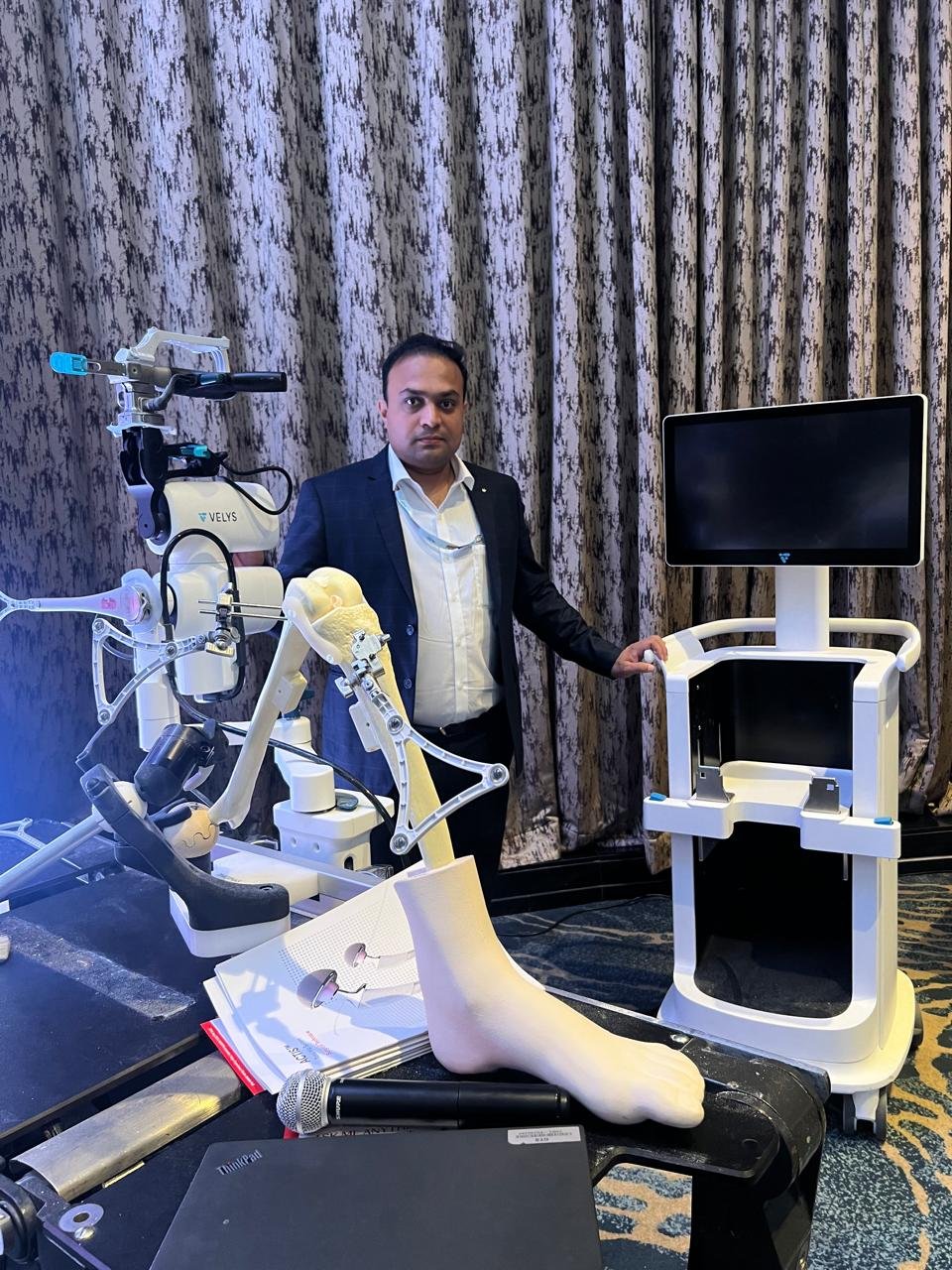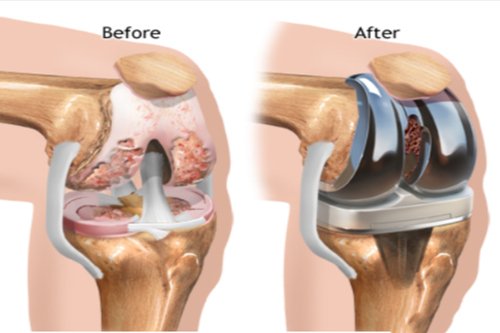Meet Our Doctor

Dr. Prajaktam M. Lende
ORTHOPAEDIC & JOINT REPLACEMENT SURGEON
Fellowships
- Navigation Based Joint Replacement Surgery (Hip & Knee Arthroplasty)
- Arthroscopy & Sport Medicine
- Ilizarove Surgery
- Observer Ship in Pediatric Orthopaedic Surgery (Wadia Hospital, Mumbai)
Knee replacement In Mandla
Home / Knee replacement In Mandla

Knee replacement In Mandla, also known as knee arthroplasty, is a surgical procedure design .thus, to replace a damage or worn-out knee joint with an artificial implant. This procedure is commonly performe to alleviate chronic pain and improve function in individuals.once, with severe knee arthritis or other conditions that affect the knee joint.
Knee replacement surgery is a highly successful procedure that can significantly improve a person’s quality of life by relieving pain and restoring function. It is often considere when conservative treatments, such as medications and physical therapy, no longer provide sufficient relief from knee arthritis or other degenerative conditions. However, the decision to undergo knee replacement is made on an individual basis, taking into account factors like overall health, lifestyle, and the severity of the knee condition.
Preoperative Preparation:
- Medical Evaluation:A comprehensive medical assessment is conducte to determine the patient’s overall health and fitness for surgery.Blood tests, imaging studies, and other diagnostic tests may be perform.
- Patient Education:Patients receive information about the knee replacement procedure, potential risks, and postoperative care. Preoperative exercises may be recommend to strengthen the muscles around the knee.
Surgical Procedure
Anesthesia: Knee replacement is typically performe under general anesthesia, although regional anesthesia options may be considere.
Incision: An incision is made to access the knee joint. The size and location of the incision may vary.
Resurfacing and Implant Placement: Damage cartilage and bone are remove from the knee joint, and the artificial knee components (femoral component, tibial component, and sometimes a patellar component) are securely implante.
Closure: The incision is close, and the surgical site is dress.
Postoperative Care
Hospital Stay: Most patients stay in the hospital for a few days, but this can vary.
Physical therapy begins shortly after surgery to aid in mobility and prevent complications.
Pain Management: Medications are prescribe to manage postoperative pain.
Prevention of Blood Clots: Blood thinners and compression stockings may be use to reduce the risk of blood clots.
Early Ambulation: Patients are encourage to start walking with the help of crutches or a walker soon after surgery.
Rehabilitation and Recovery
Physical Therapy: A structure physical therapy program helps improve joint flexibility, strength, and overall function.
Rehabilitation may continue on an outpatient basis.
Activity Modification: Patients are advise on movement restrictions and gradual return to daily activities.
What are the different types of knee replacement surgery?
There are two main types of knee replacement surgery:
- Total knee replacement: The entire joint is replaced with artificial surfaces.
- Partial knee replacement: Only the damaged compartment of the knee is replaced.
Total knee replacement is the more common of the two procedures.
Knee anatomy
To understand a total knee replacement, also known as total condylar knee arthroplasty, it’s important to first grasp the structure of the knee. This complex joint comprises three bones:
- The femur (thighbone)
- The tibia (shinbone)
- The patella (kneecap)
Strong ligaments connect the powerful muscles of the thigh and calf to the bones around the knee, controlling its motion and function. Cartilage, such as the meniscus, along with other soft tissues, covers and cushions the bones, allowing them to glide together smoothly.
Here is a diagram of the knee joint with labels indicating the femur, femoral condyle, medial collateral ligament (MCL), medial meniscus, tibia, anterior cruciate ligament (ACL), and the patella (kneecap).
When you bend or straighten your knee, the end of the femur rolls against the end of the tibia, and the patella glides in front of the femur.
However, when the cartilage cushioning the joint degrades or wears away completely, the bones rub together, becoming scraped and rough. This leads to inflammation known as osteoarthritis, causing pain and stiffness that make walking and other movements difficult. The implants used in knee replacement surgery are designed to be smooth, mimicking the surfaces of a healthy knee.
Best AVN treatment In Mandla
Dr. Prajaktam Lende is a trusted Orthopedic doctor In Mandla. Top joint Replacement surgery Doctor in Mandla. Book an Appointment with Dr Prajaktam M. Lende, one of the prominent orthopaedic surgeon specialised in Joint Replacement surgery and ligament Reconstruction surgery Dr Prajaktam M. Lende at Mandla. He is currently associated with the Orthopedic & Joint …
